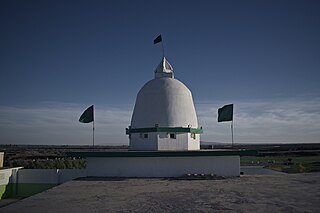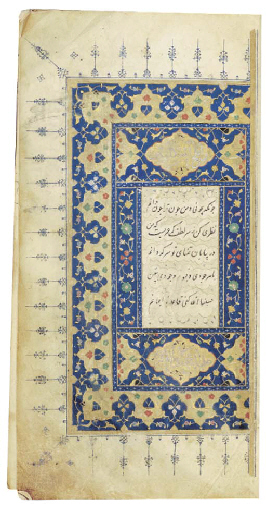Related Research Articles

Yarsanism, Ahl-e Haqq or Kaka'i, is a syncretic religion founded by Sultan Sahak in the late 14th century in western Iran. The total number of followers of Yarsanism is estimated to be over half a million to one million in Iran. The numbers in Iraq are unknown. Followers are mostly Kurds from the Guran, Sanjâbi, Kalhor, Zangana and Jalalvand tribes. Turkic-speaking Yarsan enclaves also exist in Iran.

Seyyed Mohammad Hossein Behjat Tabrizi, mainly known by his pen name, Shahriar, was a notable Iranian Azerbaijani poet who wrote in both Azerbaijani and Persian. His most important work, Heydar Babaya Salam is considered to be the pinnacle in Azerbaijani literature which gained great popularity in the Turkic world and was translated to more than 30 languages.

Shams-i Tabrīzī or Shams al-Din Mohammad (1185–1248) was a Persian Shafi'ite poet, who is credited as the spiritual instructor of Mewlānā Jalāl ad-Dīn Muhammad Balkhi, also known as Rumi and is referenced with great reverence in Rumi's poetic collection, in particular Diwan-i Shams-i Tabrīzī . Tradition holds that Shams taught Rumi in seclusion in Konya for a period of forty days, before fleeing for Damascus. The tomb of Shams-i Tabrīzī was recently nominated to be a UNESCO World Heritage Site.

Baba Tahir or Baba Taher Oryan Hamadani was an 11th-century Persian dervish poet from Hamadan, Iran who lived during the reign of Tugril of the Seljuk dynasty over Iran. This is almost all that is known of him as he lived a mysterious lifestyle. Although prefix "Baba" has been thought as part of his name in all known sources, his nickname "Oryan" did not appear until about 17th-century. The nickname was probably attributed to him because he seemed to lead a very spiritual and stoic lifestyle and thus was figuratively not clothed with worldly and material needs. His poetry is written in the Hamadani dialect of the Persian language. According to L. P. Elwell-Sutton he probably wrote in the Hamadani dialect, adding: "Most traditional sources call it loosely Luri, while the name commonly applied from an early date to verses of this kind, Fahlaviyat, presumably implies that they were thought to be in a language related to the Middle Persian language. Rouben Abrahamian however found a close affinity with the dialect spoken at the present time by the Jews of Hamadan." According to The Cambridge History of Iran, Baba Tahir spoke a certain Persian dialect.

The Shaddadids were a Kurdish Sunni Muslim dynasty. who ruled in various parts of Armenia and Arran from 951 to 1199 AD. They were established in Dvin. Through their long tenure in Armenia, they often intermarried with the Bagratuni royal family of Armenia.
A cursory glance at the history of art reveals that social, political and economic conditions have always played a major role in the emergence of new artistic currents and styles. As an example Flight by Morteza Katouzian is showing the marginalized people who have no freedom as result of political changes. In Iran, the social and political developments of the 1940s radically altered the evolution of this country's plastic arts and entirely altering its natural path.

Rawwadid or Ravvadid or Banū Rawwād (955–1071) was a Sunni Muslim Kurdish dynasty, centered in the northwestern region of Adharbayjan (Azerbaijan) between the late 8th and early 13th centuries.
Abu'l-Husayn al-Basri was a Mu'tazilite jurist and theologian. He wrote al-Mu'tamad fi Usul al-Fiqh, a major source of influence in informing the foundations of Islamic jurisprudence until Fakhr al-Din al-Razi's al-Mahsul fi 'Ilm al-Usul.

Humam-i Tabrizi, was a Persian Sufi poet of the Ilkhanate era. He was one of the most distinguished figures of his time due to his poetry, teachings, piety, and Sufi spirituality.
Fahlaviyat, also spelled fahlavi (فهلوی), was a designation for poetry composed in the local northwestern Iranian dialects and languages of the Fahla region, which comprised Isfahan, Ray, Hamadan, Mah Nahavand, and Azerbaijan, corresponding to the ancient region of Media. Fahlaviyat is an Arabicized form of the Persian word Pahlavi, which originally meant Parthian, but now came to mean "heroic, old, ancient." According to the historians Siavash Lornejad and Ali Doostzadeh, the Fahlaviyat used in Azerbaijan was called Old Azeri.

Mu'in al-Din Ali Husayni Sarabi Tabrizi, commonly known by his laqab of Qasim-i Anvar was a Sufi mystic, poet, and a leading da'i (preacher) of the Safavid order.

Mīr Sayyid Jalāl ad-Dīn an-Naqwī al-Bukhārī, better known as Jahāniyān Jahāngasht, was a Sufi saint from South Asia.
Faraj is a name of Arabic origins, found in many locations including in Kuwait, Yemen, Egypt, Libya, United Arab Emirates, Azerbaijan, Iran, and others. The name derived from Arabic meaning "joy after sadness", and can also hold the meaning "to cure", "fortune", or "remedy". Historically the name was used to warding off evil spirits, such in the case when a sibling or parent has died.
Abū Ḥātim Aḥmad ibn Ḥamdān al-Rāzī was a Persian Ismaili philosopher of the 9th century, who died in 322 AH. He was also the Da'i al-du'at (chief missionary) of Ray and the leader of the Ismaili da'wah in Central Persia.
The dehqân or dehgân, were a class of land-owning magnates during the Sasanian and early Islamic period, found throughout Iranian-speaking lands. The deqhans started to gradually fade away under the Seljuks and Qarakhanids, due to the increase of the iqta' and the decline of the landowning class. By the time of their dissolution, they had played a key role in preserving the Iranian national identity. Their Islamization and cultural Iranianization of the Turks led to the establishment of the Iranian essence within the Islamic world, something which would continue throughout the Middle Ages and far into modern times.

Javad Heyat was an Iranian surgeon and writer. He performed the first open heart surgery in Iran, and was Ayatollah Khamenei's personal physician when the latter was President of Iran in the 1980s. Heyat was the publisher and founding editor of Varliq, which he established in 1979 in Tehran. He was the recipient of numerous honorary degrees from universities in Turkey and the Republic of Azerbaijan.

Yaqub b. Uzun Hasan or Abū al-Muẓaffar Yaʿqūb Bahādur Ḫān, commonly known as Sultan Ya'qub was the ruler of the Aq Qoyunlu from 1478 until his death in 24 December 1490. A son of Uzun Hasan, he became the ruler of the dynasty after the death of his brother Sultan Khalil. The borders of Aq Qoyunlu dynasty remained stable during his reign. In his book Alam-Aray-i Amini, Fazlallah Khunji Isfahani praised him as a decent successor of Uzun Hasan. Other historians also praised Ya'qub for his patronage of scientists and poets.
Badr Shirvani was a Persian poet. He spent most of his career at the court of the Shirvanshahs, but received patronage from other rulers as well.

Abū al-Qāsim Jalāl ad-Dīn Tabrīzī was a celebrated Sufi saint of South Asia. He arrived in Bengal shortly after the start of its Muslim rule, where he propagated Islam to the local populace and spent the rest of his life. The Jaliliyyah Order, a small tariqah, is named after him, and he is considered to be the protagonist of the Sanskrit fiction Sekhaśubhodayā.
Mujir al-Din Baylaqani was a Persian poet of the 12th-century.
References
- ↑ Lornejad & Doostzadeh 2012, p. 167 (note 573).
- 1 2 Masoud Jalali-Moqaddam 2015.
- ↑ Lornejad & Doostzadeh 2012, p. 151.